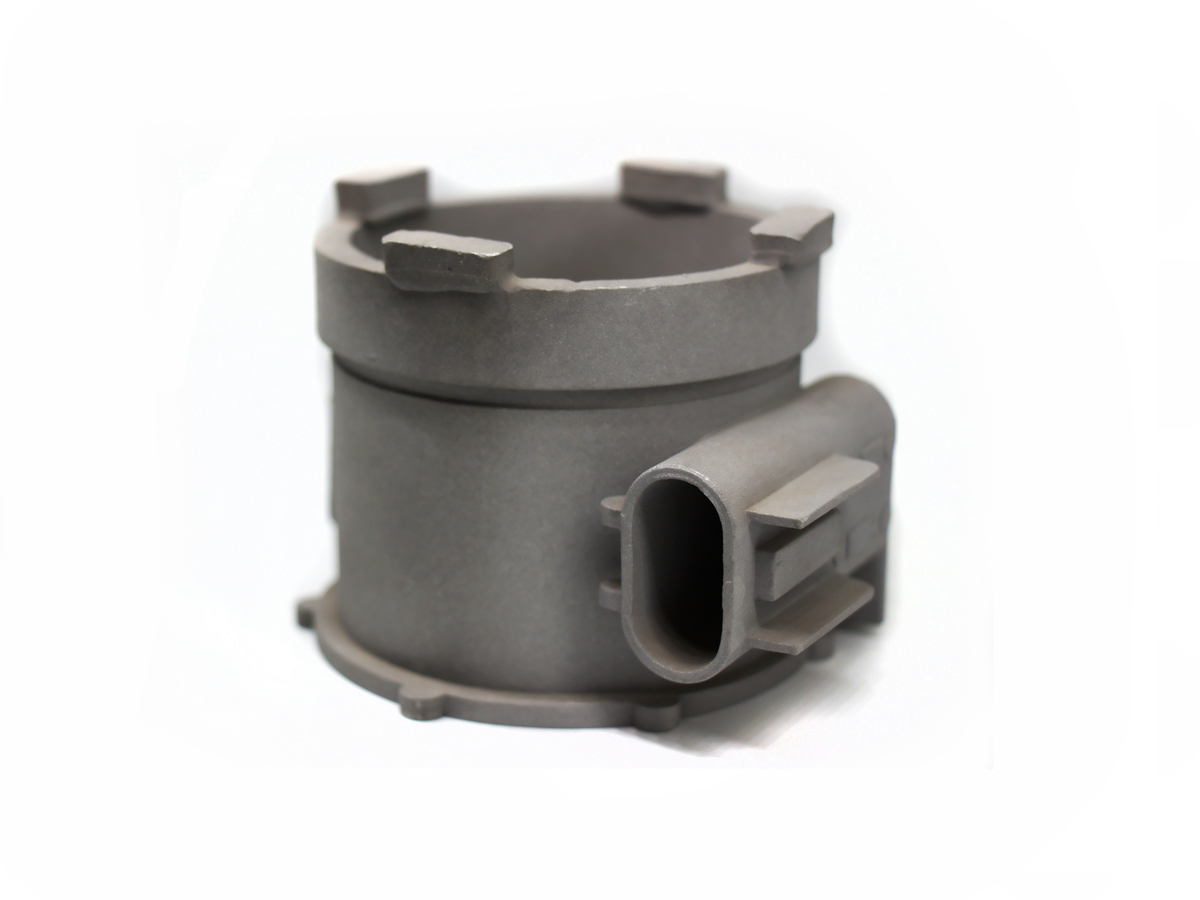CNC Machining Solutions for Safety-Optimized Nuclear Power Components
Introduction to CNC Machining for Nuclear Safety
Safety and reliability are paramount in nuclear power plants, requiring precision-engineered components to withstand harsh conditions , including high radiation levels, extreme temperatures (up to 850°C), and aggressive chemical environments. CNC machining solutions are crucial in producing safety-critical parts such as reactor internals, pressure vessels, control rod systems, and emergency cooling components. With dimensional tolerances as tight as ±0.003 mm, CNC technology ensures the precise, reliable performance necessary for the nuclear, power generation, and industrial equipment sectors.
Utilizing advanced CNC machining techniques, manufacturers guarantee stringent compliance with regulatory and safety standards, significantly enhancing nuclear power facilities' operational safety and efficiency.
Material Comparison for CNC Machined Nuclear Safety Components
Material Performance Comparison
Material | Tensile Strength (MPa) | Radiation Resistance | Corrosion Resistance | Typical Applications | Advantage |
|---|---|---|---|---|---|
1240-1450 | Excellent | Exceptional | Reactor internals, turbine components | Superior strength, corrosion resistance at high temperatures | |
515-690 | Good | Excellent | Reactor piping, cooling systems | Reliable corrosion resistance, good weldability | |
550-700 | Exceptional | Outstanding | Fuel cladding, reactor core | Excellent neutron transparency, corrosion resistance | |
790-900 | Excellent | Exceptional | Chemical processing components, valves | Superior chemical and corrosion resistance |
Material Selection Strategy for CNC Machined Nuclear Safety Parts
Material selection for nuclear safety-critical components focuses on radiation tolerance, thermal stability, corrosion performance, and mechanical robustness:
Reactor internals and turbine components exposed to high radiation and elevated temperatures (up to 700°C) significantly benefit from Inconel 718, offering exceptional high-temperature strength, corrosion resistance, and durability.
Reactor piping and cooling system components frequently utilize Stainless Steel SUS316, providing excellent corrosion resistance and weldability, essential for safety-critical fluid handling.
Fuel cladding and core structures demanding neutron transparency and superior corrosion resistance utilize Zirconium alloys, enhancing reactor safety and performance efficiency.
Valves, chemical processing systems, and components exposed to highly corrosive environments choose Hastelloy C-276, delivering unmatched chemical stability and extended operational life.
CNC Machining Process Analysis for Nuclear Safety Components
CNC Machining Processes Performance Comparison
CNC Machining Technology | Dimensional Accuracy (mm) | Surface Roughness (Ra μm) | Typical Applications | Key Advantages |
|---|---|---|---|---|
±0.003-0.01 | 0.2-0.5 | Complex reactor components, turbine blades | High precision, complex geometries | |
±0.005-0.01 | 0.4-1.2 | Cylindrical reactor parts, rods | High accuracy, efficient processing | |
±0.002-0.005 | 0.1-0.4 | Control rod drive mechanisms, precision assemblies | Precise, stress-free machining | |
±0.002-0.005 | 0.05-0.2 | Sealing surfaces, precision bearings | Ultra-high precision, exceptional finishes |
CNC Machining Process Selection Strategy for Nuclear Safety
Choosing CNC machining processes for nuclear safety components involves evaluating geometric complexity, accuracy requirements, surface quality, and operational criteria:
Complex reactor components, turbine blades, and intricate structural elements needing extremely tight tolerances (±0.003-0.01 mm) significantly benefit from Multi-Axis CNC Milling, providing exceptional precision and repeatability.
Cylindrical reactor components, rods, and pressure vessels requiring reliable accuracy (±0.005-0.01 mm) are efficiently machined using CNC Turning, ensuring consistent quality and structural integrity.
Precision control rod mechanisms and safety-critical assemblies with intricate internal geometries and tight tolerances (±0.002-0.005 mm) leverage EDM machining for stress-free, precise fabrication.
High-precision sealing surfaces, bearings, and critical mating surfaces demanding exceptional finishes (Ra ≤0.2 μm) and ultra-tight tolerances (±0.002-0.005 mm) depend on CNC Grinding, optimizing reliability and performance.
Surface Treatment Solutions for Nuclear Safety Components
Surface Treatment Performance Comparison
Treatment Method | Radiation Resistance | Corrosion Resistance | Max Operating Temp (°C) | Typical Applications | Key Features |
|---|---|---|---|---|---|
Excellent | Excellent (~1200 hrs ASTM B117) | 350 | Reactor internals, coolant pipes | Smooth surfaces, reduced contamination | |
Good | Excellent (~1000 hrs ASTM B117) | 300 | Stainless steel piping, structural supports | Enhanced corrosion protection | |
Excellent | Outstanding (~1500 hrs ASTM B117) | 500 | Critical valves, moving assemblies | Superior durability, wear resistance | |
Excellent | Excellent (~1200 hrs ASTM B117) | 550 | High-wear reactor components | Increased hardness, fatigue strength |
Surface Treatment Selection Strategy for Safety-Optimized Nuclear Components
Choosing surface treatments for nuclear safety components involves enhancing corrosion resistance, radiation protection, and component durability:
Reactor internals and cooling system pipes benefit significantly from Electropolishing, achieving smooth, contamination-resistant surfaces that reduce risk and enhance corrosion resistance.
Passivation is critical for stainless steel piping and structural supports, enhancing corrosion resistance and ensuring cleanliness essential for nuclear safety.
Critical valves, control assemblies, and precision moving parts exposed to severe stress employ PVD Coating, significantly enhancing durability, corrosion, and wear resistance.
Nitriding is ideal for reactor components under constant friction and high-stress conditions, providing superior surface hardness and fatigue resistance, which are essential for long-term reliability.
Quality Control Standards for CNC Machined Nuclear Components
Quality Control Procedures
Precision dimensional inspections with Coordinate Measuring Machines (CMM) and advanced optical systems.
Rigorous surface roughness assessments using high-precision profilometry.
Mechanical testing (tensile, hardness, fracture toughness) adhering to ASTM and ASME nuclear standards.
Radiation resistance and corrosion testing under realistic operating simulations.
Non-destructive testing (ultrasonic, radiographic, eddy-current) ensuring structural integrity.
Comprehensive documentation and traceability aligned with ISO 9001, ASME NQA-1, and international nuclear regulatory requirements.
Industry Applications of CNC Machined Nuclear Safety Components
Typical Applications
Reactor vessel internals and structural supports.
Precision turbine blades and pressure vessel components.
Control rod drive systems and emergency shutdown mechanisms.
High-reliability cooling and fluid handling systems.
Related FAQs:
Why is CNC machining critical for nuclear safety components?
What are the best materials for safety-critical nuclear components?
Which CNC machining processes deliver the highest precision for nuclear safety parts?
How do surface treatments enhance the reliability of nuclear components?
What quality standards are required for CNC machining in the nuclear industry?

